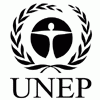Community / Land projects / Integrated forest and biodiversity management for sustainable development in the Biban mountain range
Integrated forest and biodiversity management for sustainable development in the Biban mountain range

€2918187.45
12/21 - 12/21
Completado
This project is part of
Implementing Organisations
Donors
Data Providers
Objectives
Project Objective: To conserve and sustainably use biodiversity and natural ecosystems, improve the management of natural resources in two communes of the Biban mountain range, and support outscaling across the Biban mountain range. Indicator 1: Area of landscapes under improved management practices Target 1: 32,257 hectares (including 16,259 ha under improved management to benefit biodiversity and 15,998 ha under SLM) Indicator 2: Number of individuals adopting sustainable, nature-based income-generating activities Target 2: 16,815 individuals (including 50% women)
Other
Note: Disbursement data provided is cumulative and covers disbursement made by the project Agency.
Target Groups
1. The project interventions under Components 1 and 2 will contribute significantly to empowering local populations by increasing involvement in decision-making and planning processes as well as in monitoring and evaluation activities, increasing access to knowledge and skills, increasing access to financial opportunities with continuous technical support, supporting clustering into strong organisations (i.e., producers’ associations and cooperative), and improving management practices in agricultural, pastoral and forest land to increase livelihoods’ resilience. This will enhance local populations’ autonomy and adaptive capacity, and give them the opportunity to become agents of change. Furthermore, the gender-sensitive approach adopted throughout the project will contribute to addressing gender inequalities by creating opportunities for women which often have limited access to land and financial opportunities, and particularly vulnerable to climate change. Gender balance will be promoted by ensuring that women participate actively in decision making, planning and monitoring processes, and benefits adequately from the knowledge-sharing, capacity building and income-generating interventions. 2. By supporting improved management of natural resources for increased land productivity and strengthening Value Chains, the project will increase the range of economic opportunities that exists in the Biban mountain range. As a result, the youth will not be constrained to move to the cities to find decent jobs, they will be able to adopt decent and sustainable livelihoods in the area if they wish to do so. 3. In alignment with the requests from local populations, the Bibans project will contribute to reviving, conserving and adding value to the rich traditional knowledge on the use and transformation of natural resources in the region. Under Component 1, traditional and indigenous knowledge will be built on to undertake the inventories, value assessments and corresponding mapping exercises. Additional consultations with local populations at project inception will enable to refine the identification of the traditional know-how and products that people would like to focus on in the targeted communes. A market analysis will thereafter be undertaken in collaboration with private sector actors to assess the demand and development opportunities for the identified products. Individuals and groups will thereafter be supported in strengthening the Value Chains that present good development opportunities under Component 2. A particular focus will be given to traditional crop species and breeds under the SLM interventions in order to contribute to the conservation of the cultural heritage of the region. The development of ecotourism and cultural tourism packages and the creation of a protected area will further contribute to conserving and adding value to cultural and heritage sites and knowledge. 4. The diversification of agricultural and forest products, improved exploitation practices and increased productivity under Component 2 will increase the diversity of food products available locally for better affordability of diverse and nutritious diets. This will have positive effects on health in the targeted communes. Furthermore, the biological diversity of production systems will further strengthen their resilience to pest outbreaks and climate chocks thereby enabling sustained provision of diverse local products[1]. 5. Agroecology practices will enable improved usage of natural resources, such as solar radiation, atmospheric carbon and nitrogen. In addition, in these improved production systems, the recycling of nutrients, biomass and water will be increased as well as resource use efficiency, and wastes will be reduced. By enhancing biological processes and recycling biomass, nutrients and water, producers will be able to use fewer external resources, thereby reducing costs. As an example, biological nitrogen fixation by legumes in intercropping and rotation systems can enable a major reduction in the need for synthetic fertilizers[2]. As a result, agricultural production will be sustainably increased[3]. 6. Agricultural, pastoral and forest-based income sources and markets will be strengthened under the Bibans project. The diversification of income sources through improved production systems and processing methods over 2,750 ha of agricultural, forest and pastoral land will directly benefit approximately 900 land-users[4] including at least 50% of women which will contribute to stabilising household income for approximately 4,500 individuals. In addition, diversified income sources will increase the resilience of land users to climate and environmental risks. The failure of a crop, forest or livestock species will have lower impact on the households’ income which will be more economically resilient. Environmental benefits 7. The project will have a wide range of benefits for biodiversity conservation and for the maintenance of ecosystem functioning for sustained provision of ecosystems’ goods and services. The project interventions will result in increased vegetation cover, increased soil fertility, improved water availability, greater species diversity in forest, agricultural and pastoral land, and maintained and protected habitat to support biodiversity and species conservation. It will also contribute to addressing pollution issues linked to waste management in the targeted communes by reusing green wastes to produce compost (please see Part II 1.a. 6. Global Environmental Benefits for more information). Benefits related to the current situation with COVID-19 The Bibans project will support local populations in the targeted communes in building a livelihood foundation that not only enhances climate resilience but also provides a response and recovery plan to the COVID-19 pandemic. This will be done through the establishment and strengthening of Value Chains’ opportunities. For example, under Outputs 2.1.2, 2.1.3 and 2.1.4, livelihoods’ resilience and diversification will be supported through improved management of agricultural, pastoral and forest resources and through the strengthening of crops, PPAMs, NTFPs and small livestock Value Chains to support increased and more reliable income for vulnerable households. The criteria for prioritising the livelihood interventions will include the impact of COVID-19 on local populations. Increased production of a diversity of products and local productions of required inputs (e.g., seeds, seedlings, indigenous breeds) will increase economic reliance in rural areas and reduce their vulnerability to national market restrictions. [1] FAO, 2018. The 10 Elements of Agroecology: Guiding the transition to sustainable food and agricultural systems. [2] FAO, 2016. Soils and Pulses: Symbiosis for life. Rome. [3] Levard L (Gret), Mathieu B (AVSF), 2018. Agroécologie: capitalisation d’expériences en Afrique de l’Ouest. 82pp. [4] This includes approximately 300 crop producers, 200 olive producers, 200 livestock farmers, and 200 harvesters of forest products.




